Review of the sweetest and most productive carrot varieties and hybrids
Juicy, crunchy carrots are one of the few vegetables that both adults and children enjoy eating. Bright orange root vegetables are used to prepare soups, broths, salads, winter preparations, as well as light and healthy desserts.
Carrots do not require special growing conditions. The culture is unpretentious, undemanding to heat and grows on almost any soil. We will tell you in the article which varieties of carrots are the sweetest and most productive.
What determines the sweetness of carrots?
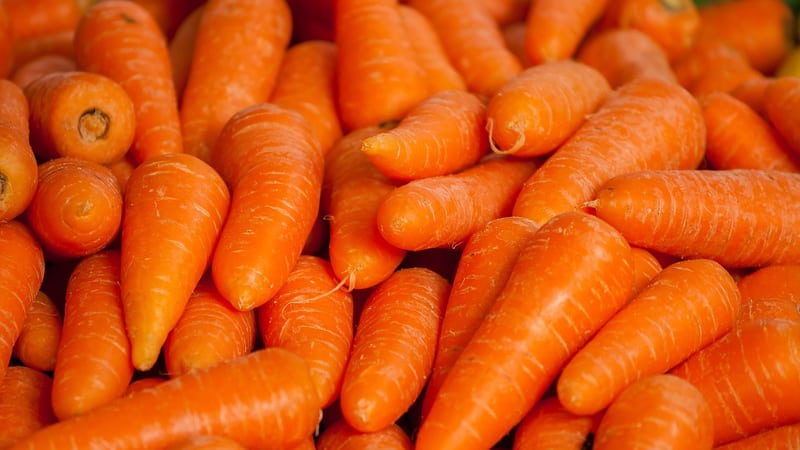
The sweetness of the root vegetable depends on the variety chosen. Breeders have developed varieties and hybrids with a high sugar content. They even have names that speak: Gourmand, Rafinad, Caramel.
The sweetness of carrots is also affected by the amount of moisture in the soil during the growing period. With irregular or insufficient watering in the second half of summer, the sugar content in root vegetables decreases.
Another factor that affects the sweetness of root vegetables is the acidity of the soil. Despite the fact that carrots grow well in both slightly acidic and slightly alkaline soils, pH levels above 6.5-7 units negatively affect the absorption of nutrients by plants and the taste of root crops.
The sweetest and most productive varieties and hybrids
Sweet, crunchy carrots are a real treat that kids love. It is not only tasty, but also healthy. Root vegetables contain vitamins, fiber, as well as macro- and microelements necessary for the body to function properly.
Advice. When choosing a variety, give preference to domestic varieties. Although the appearance of our root vegetables is inferior to foreign ones, their carotene content is higher and their taste is better.
Which carrots are the sweetest and most productive? Here is a description of several popular varieties and hybrids.
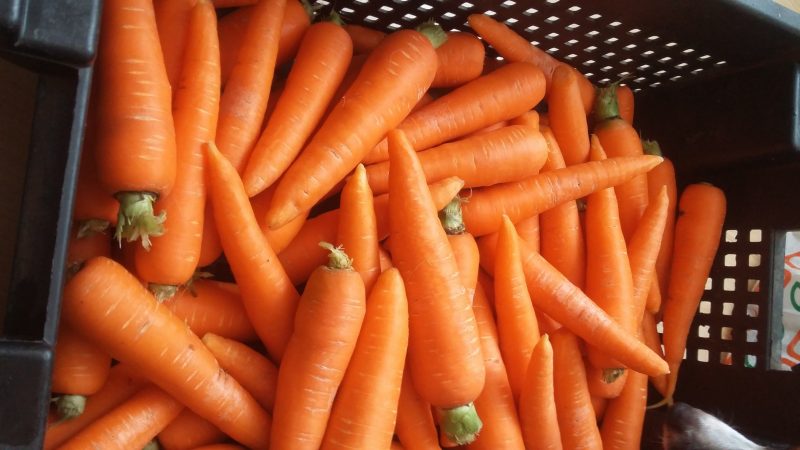
Sweet tooth
Mid-late variety. From the moment of emergence of seedlings to the onset of technical ripeness, 110-120 days pass. The shape of the root crops is cylindrical, with a blunt tip. The average fruit weight is 100-140 g.
A distinctive feature is the high content of sugary substances in the pulp (up to 8.6%) and carotene (up to 16.5 mg/100 g). These carrots are resistant to cracking and coloring.
Slastena is suitable for winter storage, fresh or frozen. Tasty in preparations and pickles.
Sweet crunch
Mid-season and high-yielding carrots. The weight of root crops reaches 150 g. The fruits are cylindrical, blunt-pointed. The pulp is juicy and sweet, with a rich taste.
The advantages of the variety are resistance to cracking, blooming, and good shelf life. Judging by the reviews, Sweet Crunch carrots make delicious juice.
Nantes 4
Popular mid-season carrots. Ripens in 80-100 days. It is undemanding to growing conditions and is successfully cultivated in the Moscow region, the Urals, and Siberia.
The pulp is orange, juicy, moderately sweet. The carotene content is increased (up to 19 mg per 100 g). Productivity - from 2.5 to 6.5 kg per m². The shape of the fruit is cylindrical, with a blunt rounded tip. The weight of root vegetables is from 100 to 160 g.
When stored, Nantes is little susceptible to rot and remains juicy and hard for long winter months.
Olympus
Late-ripening variety of French selection. Yield indicators are from 5 to 12 kg per m².The root crops are large, smooth, weighing up to 130 g. The pulp is orange and juicy. Grows well in slightly acidic light soils. Keeps fresh for a long time without loss of taste.
Bolero F1
Early maturing hybrid. Root vegetables are medium in size, cylindrical in shape with a blunt apex. The pulp is orange, juicy, and has high taste.
The advantage of the Bolero F1 hybrid is its immunity to temperature changes, resistance to Alternaria, powdery mildew, and root rot.
Late sweet F1
This is the latest of the sweet hybrids. The ripening period of root crops is 130 days or more. The fruits are conical in shape with a wide base. The pulp is sweet and juicy. Root crops grow weighing up to 220 g.
From 4 to 6 kg of root vegetables are collected from 1 m². Suitable for processing and winter storage.
The earliest varieties of sweet carrots
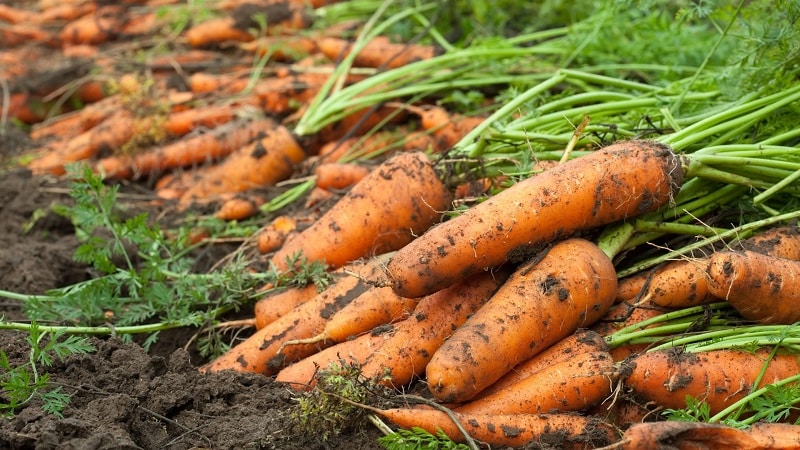
The obvious advantage of early varieties is the opportunity to enjoy sweet carrots as early as June. But they also have common disadvantages: a short shelf life and a less sweet taste than mid-season and late varieties.
The root crops of early varieties are medium-sized, and the yield is also inferior to mid- and late-ripening varieties.
Interesting fact. The Californian town of Holtville, the carrot capital of the world, hosts an annual carrot festival. At the festival, a carrot queen is chosen, orange fruits are used instead of sports equipment, and delicious carrot cakes are prepared.
First collection
Ripens in 90-100 days. Root vegetables are bright orange. The shape of the fruit is conical, with a pointed tip. The average length is 12-13 cm. The pulp is juicy, tender and sweet, with a high carotene content.
Lenochka
The harvest is harvested 80-85 days after emergence. The fruits are cylindrical, large, up to 16 cm long. Weight - up to 150 g. The core is thin.The average yield is 4-5 kg per m².
Hybrid Mother-in-law F1
Ripens in 80-90 days. The taste is delicate and sweet. The roots are orange, cylindrical, blunt-pointed. The core is thin. The fruits grow up to 11 cm long, weighing on average 150 g. The advantage of the hybrid is its resistance to carrot fly damage.
Sweet varieties of carrots for children
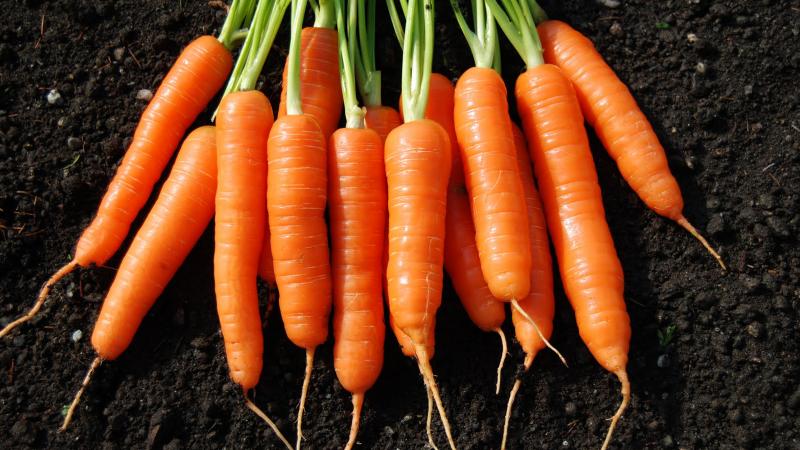
Children eat juicy, crispy carrots with pleasure. This is not only tasty, but extremely healthy delicacy. Here is a description of the varieties that kids especially like.
Children's sweet
Mid-early variety. The pulp is beautiful, bright orange. It is characterized by a high content of carotene (up to 15 mg per 100 g) and sugary substances (up to 8%). The roots are cylindrical, blunt-pointed, up to 20 cm long. The pulp is juicy, tender and sweet.
The variety is recommended for fresh consumption, making juices and purees. It has high keeping quality. Resistance to diseases average.
Caramel
Mid-late carrots. Root crops are medium length, cone-shaped, blunt-pointed. The color of the skin and pulp is orange. It has excellent taste. Good both fresh and prepared. Suitable for freezing. Keeping quality is high. The variety is resistant to cracking and blooming.
Honey
One of the best varieties of carrots both in appearance and taste. Root vegetables are long, straight, cylindrical in shape. The color is orange-red, the core is small.
Honey carrots are recommended for children's and dietary nutrition. A distinctive feature is resistance to bacterial and black rot, powdery mildew. The best yield indicators are on sandy and loamy soils.
Sweet tooth F1
Late ripening carrots. Ripens in an average of 120 days.The roots are conical, large (up to 20 cm in length and 2.5 cm in diameter). The pulp is dense, juicy and sweet. It has a high carotene content.
The Sweet Tooth carrot variety is characterized by excellent keeping quality. Used for preparing baby food.
Why carrots can taste bitter
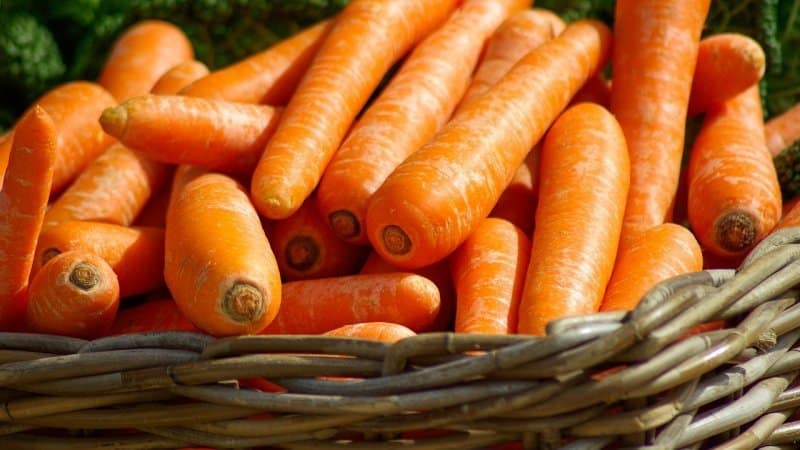
During growth and storage, carrot pulp often becomes bitter. Main reasons:
- Seed material from unscrupulous producers. For example, if a hybrid is planted not F1, but F2, it will have a bitter taste.
- Wrong choice of variety. Early and mid-early varieties are not intended for long-term storage; over time they begin to taste bitter.
- Failure to comply with storage conditions. If optimal storage conditions are violated (air temperature +1-2°C, humidity 70-80%), then root crops are affected by diseases and pests, which also leads to a deterioration in taste.
- Lack of potassium in the soil. Carrots need potassium for their sweetness and shelf life. An accessible natural source of this element is wood ash. It is useful for her to powder the rows throughout the summer.
- Harvest delay. If they are not removed from the garden in a timely manner, root crops begin to take root in the soil and lose their sweetness. Oversitting in the ground is most critical for early ripening varieties.
- Placing carrot beds next to apple trees. Close proximity spoils the taste of root vegetables and apples. The first spring flight of the carrot fly coincides with the flowering of fruit trees, which attracts the pest.
Conclusion
When choosing a carrot variety, be guided by the goals of growing the root crop. If you want to please your family with crunchy fruits at the beginning of summer, choose early-ripening sweet varieties and hybrids.If your goal is to stock up on vitamin-rich root vegetables for the long winter months, purchase seeds of mid-season and late varieties. They contain the maximum amount of carotene and sugars.